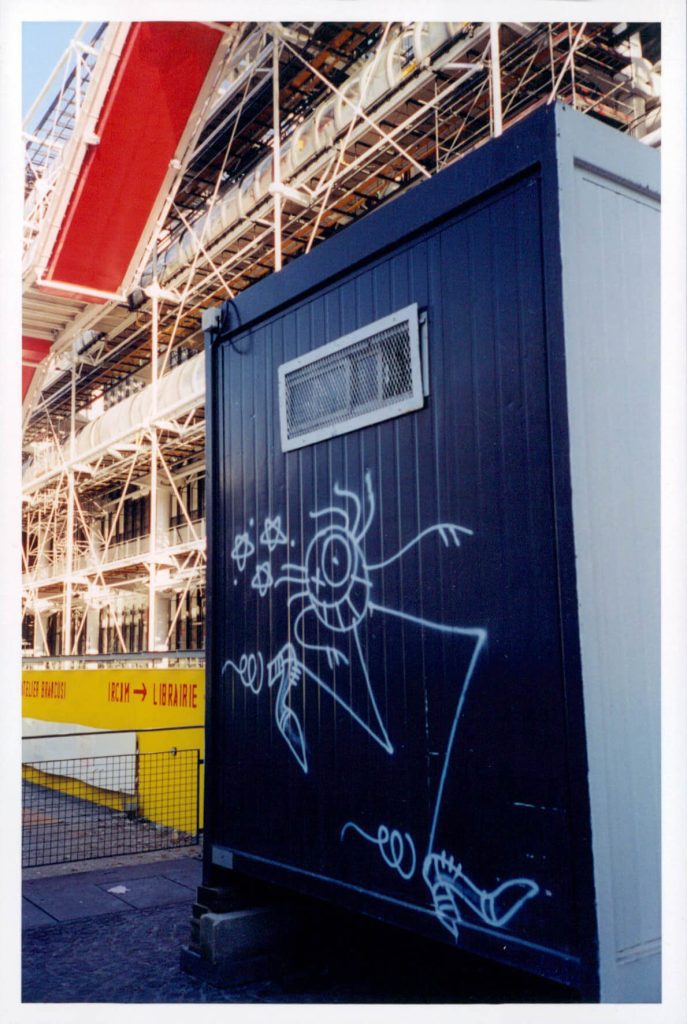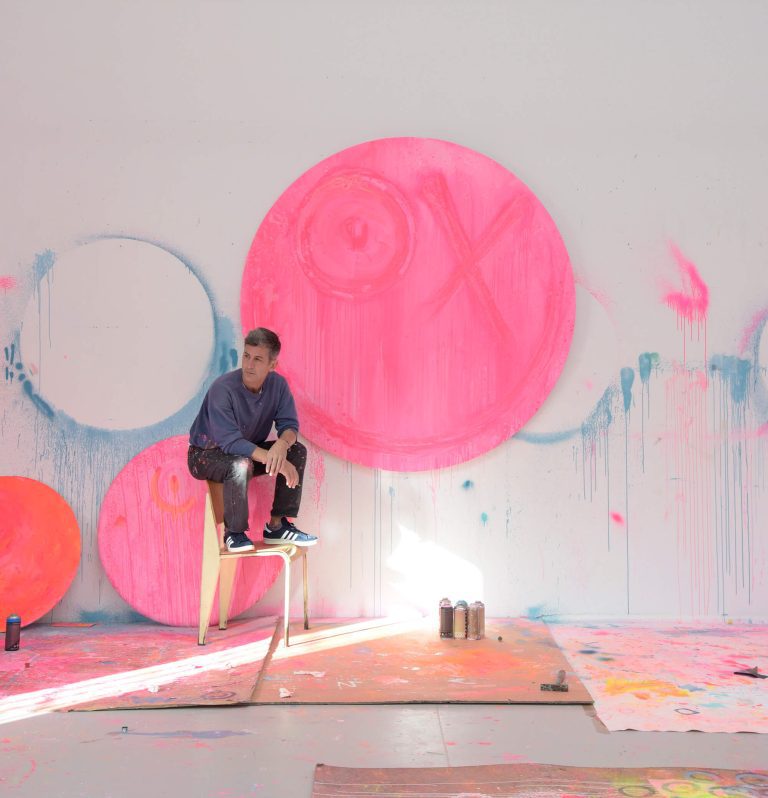In the dynamic world of art and culture, acclaimed Swedish-French artist André Saraiva stands out as a modern luminary—effortlessly creative and undeniably cool. Though best known for graffiti—his iconic character Mr. A can be found on all inhabited continents—Saraiva’s abundant creative output also includes the design of eclectic spaces where luxury is imbued with imagination and artistic collaborations with Louis Vuitton, Tiffany & Co., and Nike. With every endeavour, every collaboration, and every brushstroke, Saraiva builds a symphony that resonates globally.

hube: Imagine we’re in a museum like the Louvre or the Metropolitan, where would you go first, and why?
André Saraiva: To be honest, the Louvre, because it is closer to my house.
I like the Louvre. It reminds me of growing up in Paris, wandering around and getting lost in the maze, the galleries, of this giant museum. Going from the paintings and the Mona Lisa to the mummies and the Egyptian antiques, resting by the Etruscan columns. I remember being in front of the Mona Lisa with almost no one around me. In those days, all the museums were free to students. I love visiting the Met when I’m in New York. It is a magical museum and I love their art, but it doesn’t bring back as many memories as the Louvre.
h: What have you found interesting in visual arts lately?
AS: I’m always excited by new trends in art. I’m really happy that female artists are finally gaining the recognition they deserve. I love Aurel Schmidt and Valie Export.
h: Following its creation, an artwork often takes on a life of its own, acquiring new meanings and interpretations with each encounter by viewers. Are you aware of how your symbols and signature motifs are perceived by your audience?
AS: Once graffiti is on the wall, it belongs to everyone. People can make up their own stories around them. That’s why I do graffiti. One day, I was walking down the street and I noticed a woman in deep conversation with someone. From afar, I couldn’t see who she was speaking to. But as I got closer, I saw that she was alone. Then I realised she was talking to one of the Mr. As I’d sprayed on the wall. I continued my walk because I didn’t want to interrupt her conversation.
h: Can colour serve as a source of inspiration, or do you view it solely as a tool of self- expression?
AS: Colours, for me, are like an alphabet. Each combination tells a different story depending on which colour it is next to, and what intensity it has. It’s a bit like putting different letters next to each other, different combinations will form different words.

